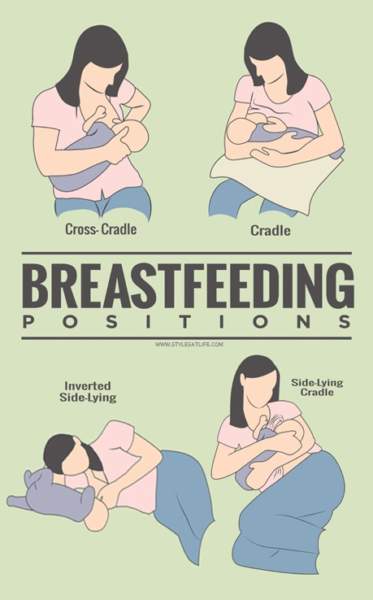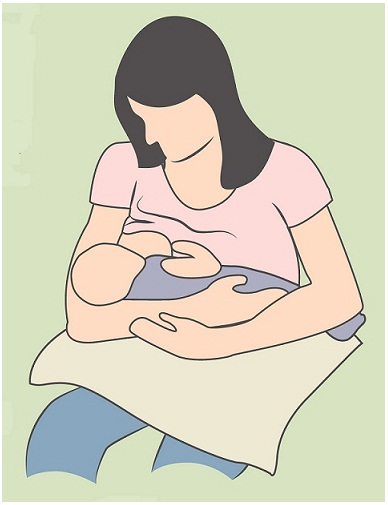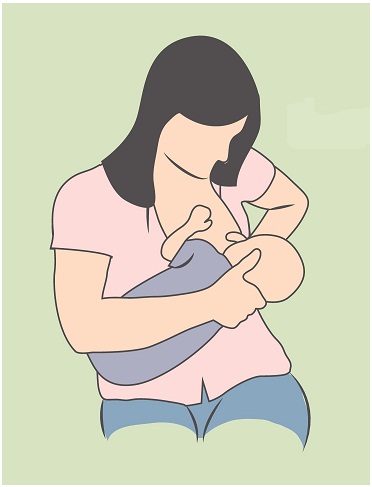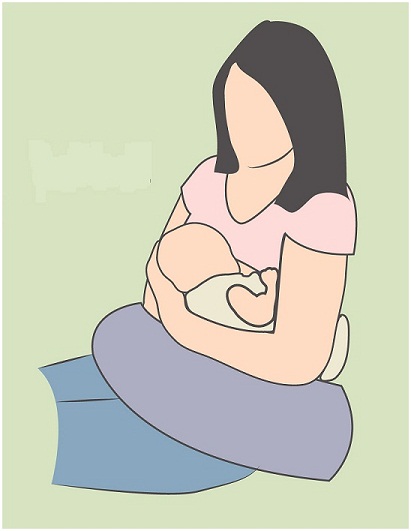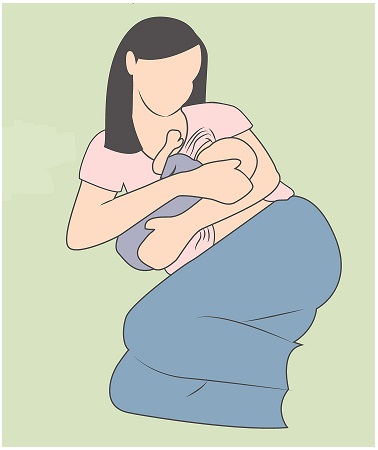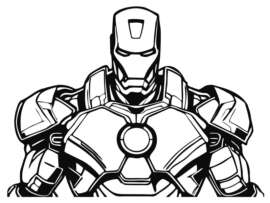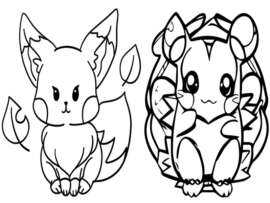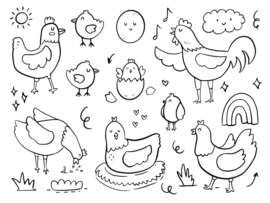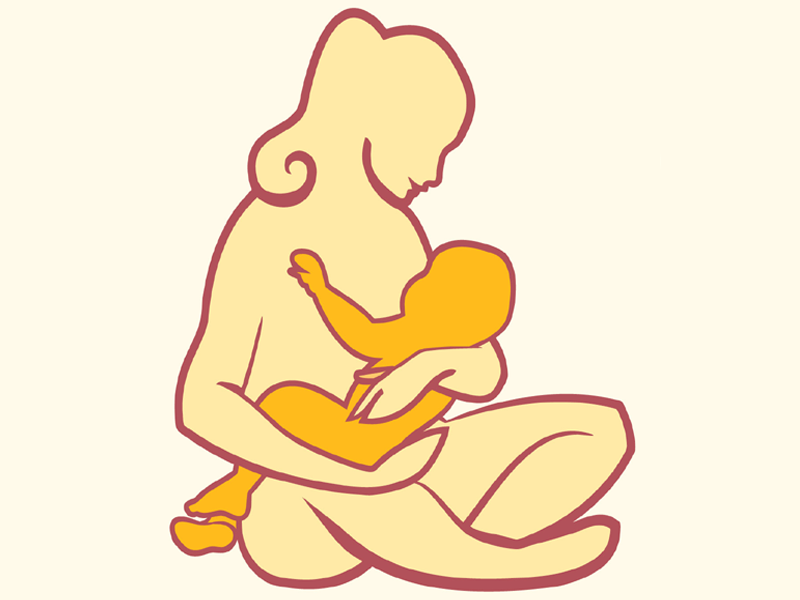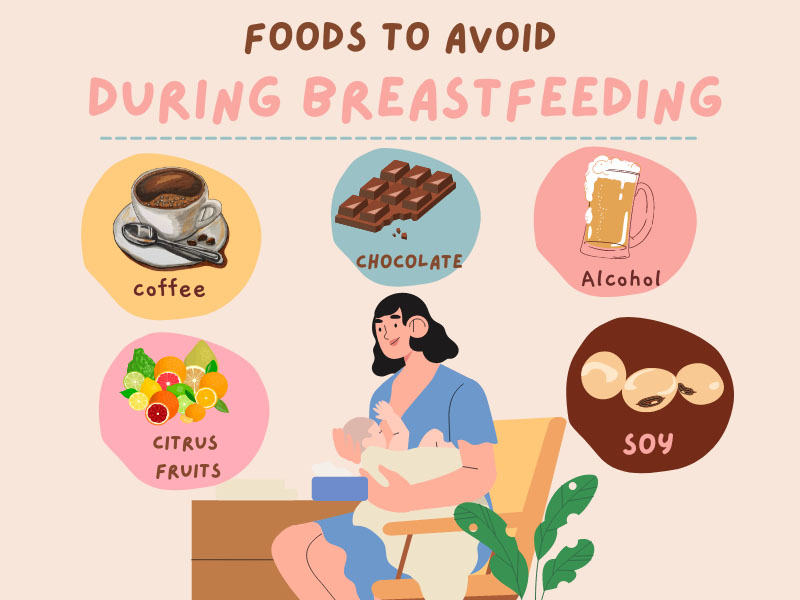`Breastfeeding to the newborn is strongly recommended for both the good health of mother and baby. We all know that the milk comes naturally, but how well is it possible for a new mother to understand how to breastfeed the little one? Breastfeeding positions may be difficult to manage and identity initially, especially if it is the new mother’s first child. It requires a lot of patience, practice, and beginning days may be hopeless and haphazard.
But worry not – a useful guide on positioning, how to feed, and tips can undoubtedly help you. Within a few days, you can understand the ideal breastfeeding positions for newborn and your comfort. To understand which can be suitable, let us go through all these holds and types of positions.
Benefits of Breastfeeding:
Breastfeeding to the newborn is strongly recommended by all doctors, healthcare professionals, and the World Health Organization (1). The benefits associated with it are numerous. Overall, it positively helps in the good health of both the mother and the child.
- Breastfeeding takes care of a child’s nutritional needs for the first several months of his or her life. Since that is the only source, especially during the beginning months, vital energy and nutrients are only given through breastfeeding.
- The breastfeeding milk helps to also provide and develop antibodies in the child’s health. These antibodies are beneficial to fight common illnesses and diseases in the early stages of their life.
- Breast milk also has growth factors that help in hormones and growth factors. A child who receives the mother’s milk is less likely to be prone to growth-related concerns, both mentally and physically.
- There are also antibacterial bodies present in the milk, which aids the newborn kid work against illnesses. They also help in growing the immune system.
See More: Breastfeeding Tips
Different and Best Breastfeeding Holds for New Mothers:
There is nothing like one correct position for breastfeeding the newborn. There are several types and different positions, and once you are set, you can try one of these. Here are the most recognized breastfeeding positions for babies.
1. Cradle Hold Position:
This is among the most common type of positions for the activity of breastfeeding. To breastfeed the baby in this cradle hold position, here are the steps.
- The head of your baby should rest on your bend of the elbow. Rest the baby on the elbow hand side that you will be breastfeeding.
- With the other hand, support the rest of the body.
- Reach the baby and place the thumb above side your nipple.
- The baby’s nose should now touch your breast.
- Compress your breast slightly and point the nipple slightly towards the baby’s nose and mouth.
2. Cross Over Hold Position:
Cross over hold or cross-cradle hold is again a common kind of breastfeeding posture. In this method,
- Sit in a pleasant position and hold your baby’s head.
- Use the opposite hand side of the breast; you will be nursing to hold the baby’s head. That means, if you are feeding the baby from the right side breast, hold the little one’s head with the left hand.
- Let your wrist help to rest between the baby’s shoulder blades easily. Let one thumb be behind a year and other fingers behind other ears.
- Cup your breast now and let the baby latch.
3. Football Hold or Clutch Hold Breastfeeding Position:
A clutch hold or football hold or rugby hold of feeding baby is especially found used by new mothers who have recently either
- Given birth to twins
- Or a premature baby
- Or had C-section painful delivery
The football hold can also help mothers with larger breasts and a comfortable position to feed the baby. To best way to breastfeed the little one in this position of clutch hold,
- Let the baby face you. Position the baby towards you
- Here, the baby’s legs are tucked under your arms, on the side of the breast you are about to nurse from.
- Since the legs of the baby positions in the tucked form, it appears like a football hold. Hence the name.
- Use the hand to support the baby’s head and let the baby reach out to the breast just like cradle hold.
4. Laidback Position in Reclining Mode:
The laid-back baby feeding position of nursing is also called biological nursing or biological nurturing position. Particularly, if the new mother either has a small breast size or if the baby is suffering from a sensitive tummy or gas, this position can be quite helpful in hand. For breastfeeding the little one in this infant feeding positions,
- Get the help of a bed or a couch to sit comfortably or lean back. Use pillows or cushions to support you in getting to a comfortable reclining position. This is why the position is called as laid back nursing positions method.
- You can now let the baby rest on you in any direction or position as you are comfortable. Let the front body of the baby be against you so that he or she can reach your breast.
- Direct the nipple towards the mouth.
- In this method, sitting and reclining in the manner helps put the little one tummy on to your tummy, and he or she can easily reach your breast.
- In this position, all you need to do is to lie back and relax; the baby can latch himself.
5. Side-Lying Breastfeeding Position:
A side-lying position of breastfeeding is a method of lying down on the bed and feeding. This method is primarily used for breastfeeding at night times.
- For this position, both mother and baby can lie down on the side positions. They should be facing against each other, tummy to tummy manner.
- Now, use the hand of the side where you are not lying on to reach your breast, you need to use for nursing.
- Reach the breast to the baby’s nose, and he or she will start latching.
- Make sure not to use this position on a couch or recliner.
6. Upright Breasting Positions:
This position of upright breasting is also called koala hold or upright football hold for breastfeeding newborn. in this position,
- The baby has to sit up and face you.
- The baby has to face to your side and straddle your knee
- Support your baby gradually with one arm. Use the arm on the same side as your nursing breast
- Now just like football, hold, support your breast with your other hand and let the baby latch.
See More: How To Stop Breastfeeding
7. Complete Laid Back Breastfeeding Position:
For the new mothers who had a cesarean or C section delivery and are in pain to breastfeed the newborn, this can be a good position. It is a comfortable position to help. In this breastfeeding positions after C Section,
- Lay back completely and recline with your baby’s body placing across your shoulder
- The baby here will lie across your shoulder area with head reaching breasts.
- Make sure you do not have any weight or pressure on you.
- Now you can let the baby latch by getting your breast near to his or her mouth.
8. Nursing in a Sling:
This is a complicated and complex way of nursing but very helpful to mothers who are on the go. With a little practice, you can nail it too. In this position, you breastfeed your baby in a sling. To do this,
- The baby should hold the head up here. So, the feeding position is not for entire newborns
- Use a sling or stretchy wrap or carrier around you.
- Let the baby’s face and chin be against you and not sure they aren’t pressed against tightly
- Hold the head up and let the breast reach out to his mouth.
9. Dancer Hold Breastfeeding Position:
This position can help the breastfeeding process for newborns who have down syndrome or are born prematurely or suffering from disabilities or illness. In this method, the head of the baby and breast are held for better results.
- Cup your breast from a hand underneath. Place fingers on one side and thumb on the other side
- The thumb and index finger should form a U shape in front of the breast.
- While three remaining fingers support the breast from underneath, rest the baby’s jaw on the thumb and index finger
- He can feed with his chin placed at the bottom of U and thumb reaching and supporting his cheeks.
- While the baby has a lot of support to hold his head and control, it is suitable for them to begin the feed in the right baby latching position.
Tips to Get a Good Latch:
The entire process of breastfeeding helps the baby to have a good latch. But how to make sure that he or she is having one? With these tips, you can help your newborn in the right position for breastfeeding.
- Use your nipple to tickle the baby’s lips. First, aim it near the baby’s nose and move towards his or her lips. This can help to reflex your little one towards latching.
- Make sure to cover the baby’s mouth with a nipple or areola. Help the baby open their mouth like a yawn, and you can help by reaching his mouth with the nipple.
- Arm yourself very well and comfortable. The breastfeeding position should be good and relaxing for both mother and baby. A good pillow or supplies to help support your arm and feeding position can be useful to go.
- Breastfeed with both breasts, as comfortable for your baby and you. Do not always depend only on one breast.
See More: Breastfeeding Diet
Precautions and Do not’s for Breastfeeding Positions:
Not just the tips, certain precautions are ought to follow in the process too. In order to avoid the wrong position of breastfeeding,
- Make sure to not stuff your baby against you altogether. Notice and observe if he or she is in a comfortable position. Do not place or hold too near or too tight.
- Give the baby ample space to move around.
- Do not block the baby’s nose with your body while breastfeeding. Just make sure to reach nipple to his or her mouth, and not block nose.
- Make sure the baby’s body and head do not face two different directions.
With these several tips and tricks of breastfeeding positions, take time to observe and notice the most comfortable ones for you and the baby. Try out a few times and have patience; with time, both mother and baby can figure out which few positions can work well.
Disclaimer:
Always make sure to consult and take the help of a healthcare professional for the first time breastfeeding. Also, consult any support mechanisms in case you find it difficult to breastfeed. The doctor’s advice should be taken into consideration in the positions you intend to follow.


